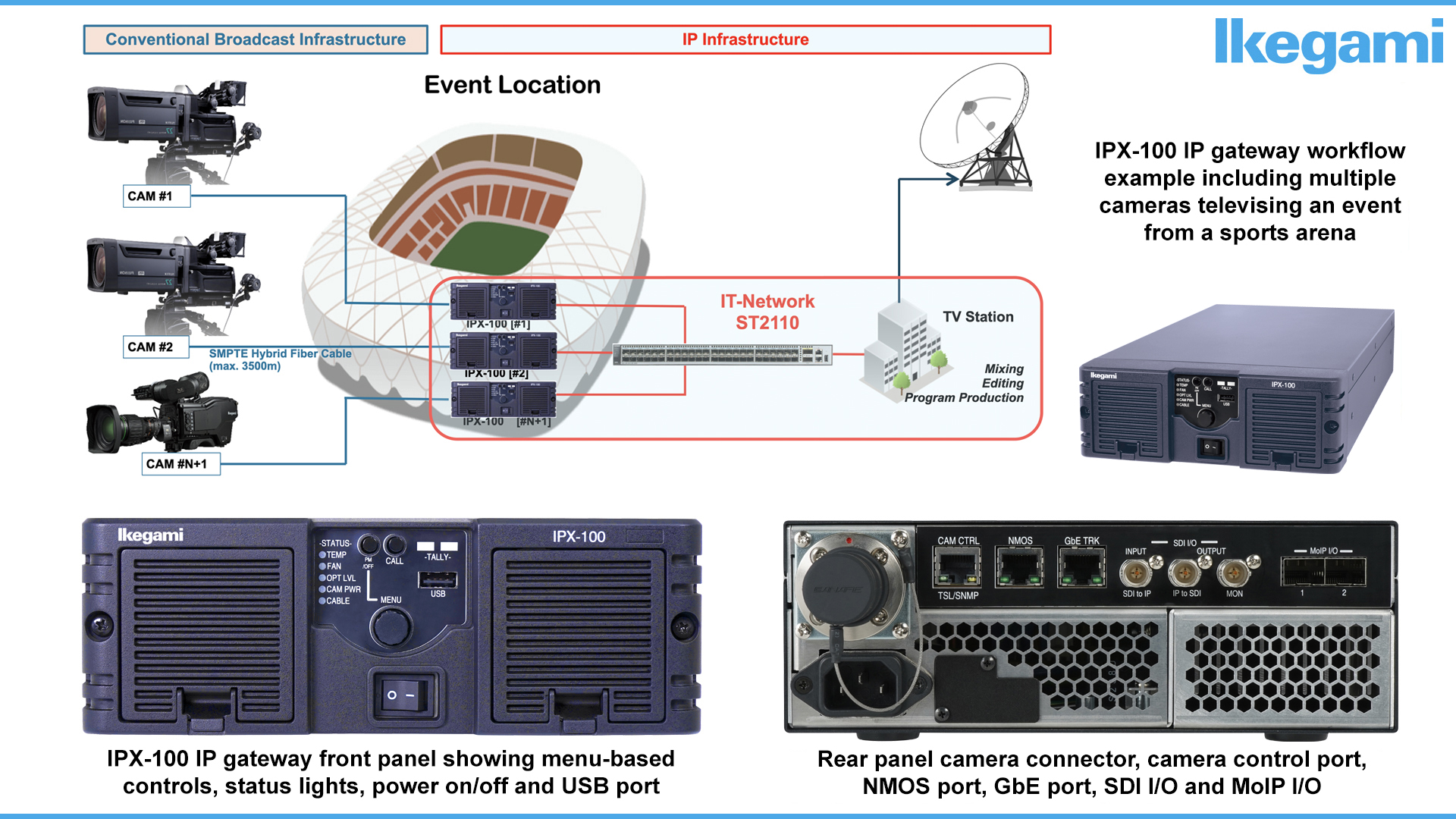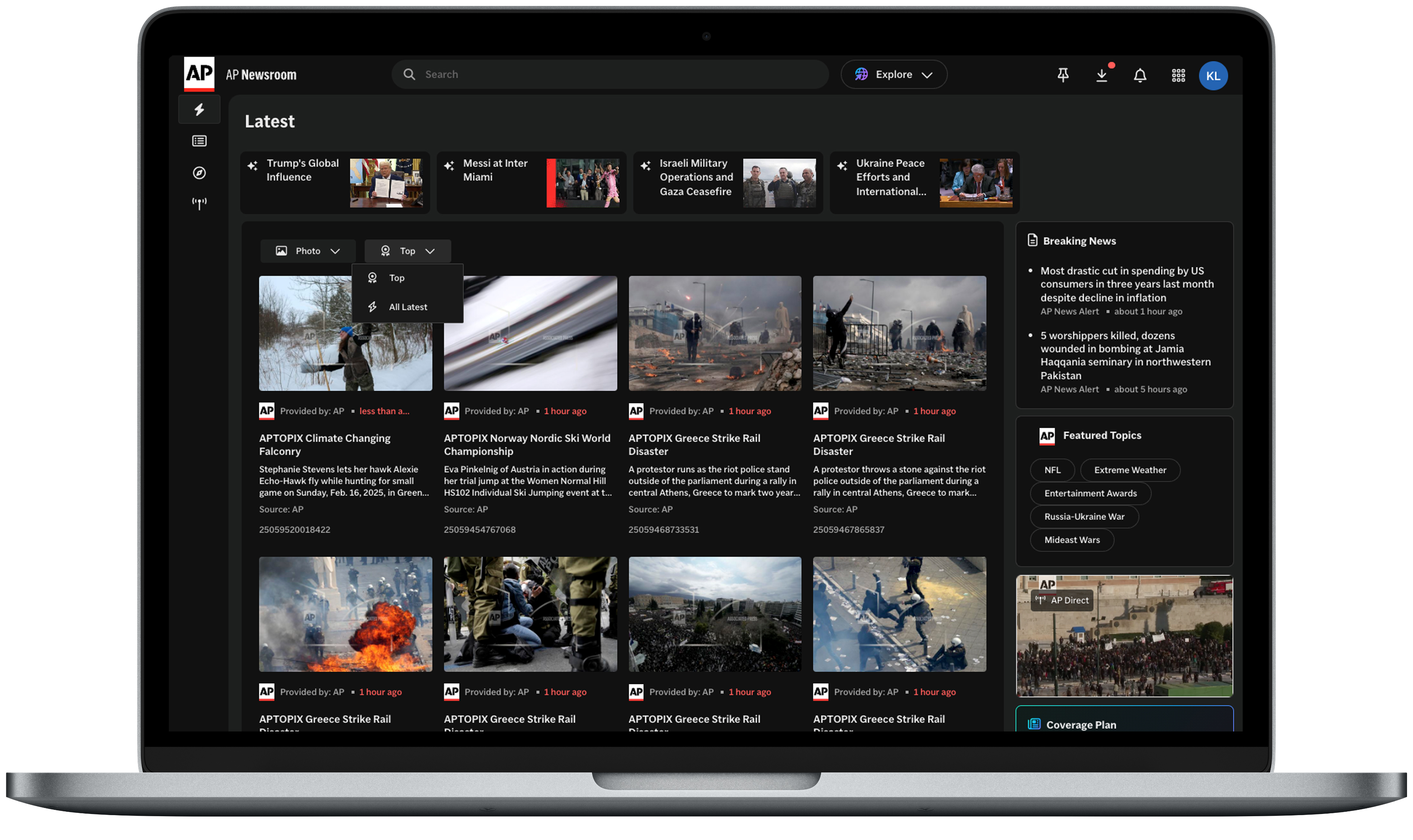Ikegami Electronics to Introduce IPX-100 IP Gateway at 2025 NAB Show
The IP gateway for Ikegami UNICAM XE and UNICAM HD cameras will make its U.S. debut at the show

MAHWAH, N.J.—Ikegami Electronics has announced a new addition to its range of broadcast quality television production, control and monitoring equipment for the U.S. market, the IPX-100. It also confirmed that the IP gateway for Ikegami UNICAM XE and UNICAM HD cameras will make its first U.S. appearance on the Ikegami booth, N1539, between April 6 to 9 at the 2025 NAB Show in Las Vegas.
The product had been introduced at the 2024 IBC Show in September in Amsterdam.
The IPX-100 allows broadcast content creators to adopt SMPTE ST 2110 IP remote operation while supporting the familiar workflow of baseband live production. Each camera can feed into an IPX-100 gateway via up to 2 miles of conventional SMPTE-hybrid fiber cable. The camera head is powered by the IPX-100 so there is no operational difference for the cameraman compared with using a conventional fiber-cabled camera.
“The IPX-100 is a compact lightweight unit, 2U height and half rack width, and weighing just 11 pounds,” explained Emilio Aleman, senior product manager at Ikegami Electronics (USA). “It is suited for use in a central equipment room, a REMI mobile unit or flight pack, or for operation as a portable throw-down unit. Equipped to work fully self-contained, the IPX-100 incorporates a test signal generator which allows system configuration before cameras or other sources are connected. Support is also included for the video trunk channel of our UNICAM XE cameras, allowing IP integration of a POV camera such as our box style UHL-43.”
The IPX-100 can be configured quickly via a series of license-key options to suit specific requirements as or where needed. Those include:
- A gateway function for 3G/HD-SDI input/output enabling SDI-to-IP and IP-to-SDI conversion, supporting external devices at the IPX-100 location.
- JPEG XS (SMPTE ST2110-22 compliant) encoding and decoding. JPEG XS preserves the visual quality of an uncompressed stream with almost no human-perceptible delay. It is ideal for remote production where transmission bandwidth is critical. The IPX-100 provides selectable JPEG XS data rate in four steps: High (1/5), Mid (1/8), Low (1/16), and Mini (1/32), allowing users to select the optimal setting according to operational conditions. The JPEG XS option also provides support for Video Trunk and QTV in 4K.
- 3D-LUT output for HD simulcasting. This is compatible with 33 x 33 x 33 or 65 x 65 x 65 .cube files created using DaVinci Resolve and well as HD to 4K-UHD upscaling.
A PC running Ikegami XE Web View software can simultaneously be coupled to the camera control network via an optional Ikegami Protocol Gateway, enabling initial setup and supervision of the ST 2110 interface. Automated MoIP network setup can be performed using an NMOS IS-04/IS-05 feed from the IPX-100 to a local or remote central automation system.
Video formats supported as standard include UHD (2160p59.94/50), HD (1080p59.94/50, 1080i 59.94/50, and HD-HFR in 1080i/p (2x/3x/4x speed) and 720p59.94/50). Other supported standards include SMPTE ST 2022-7 redundancy, ST2110-10, ST 2110-20/-21/-22/-30/-40 and ST 2059-1/2 PTP synchronization and NMOS IS-04/-IS05 control protocols.
Get the TV Tech Newsletter
The professional video industry's #1 source for news, trends and product and tech information. Sign up below.
An HD-SDI video monitoring output allows direct connection of a field monitor to the IPX-100, facilitating initial setup.
George Winslow is the senior content producer for TV Tech. He has written about the television, media and technology industries for nearly 30 years for such publications as Broadcasting & Cable, Multichannel News and TV Tech. Over the years, he has edited a number of magazines, including Multichannel News International and World Screen, and moderated panels at such major industry events as NAB and MIP TV. He has published two books and dozens of encyclopedia articles on such subjects as the media, New York City history and economics.

